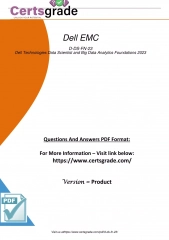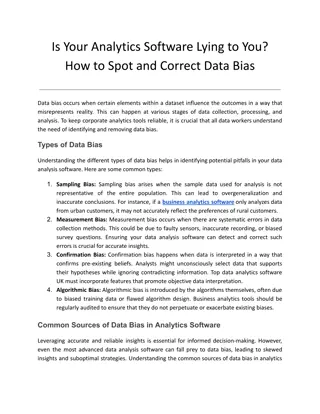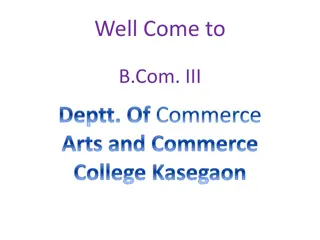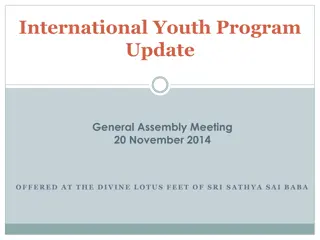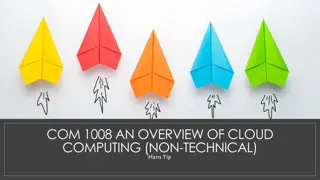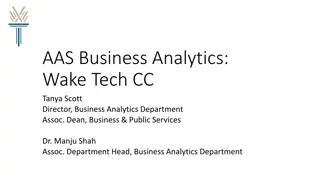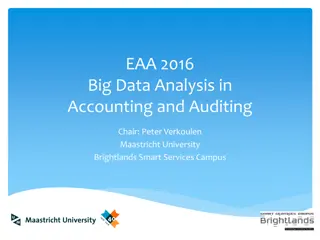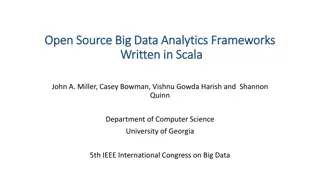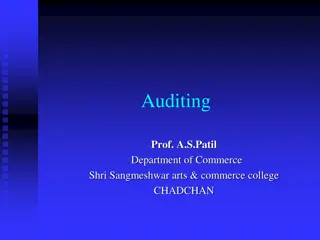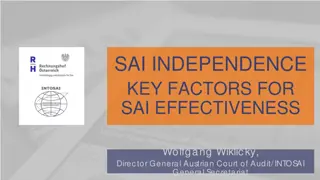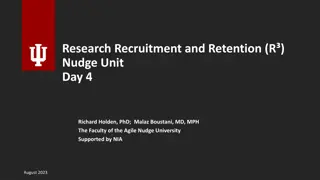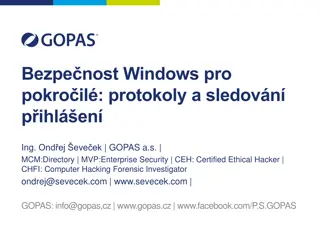Big Data Analytics in SAI India: Auditing, Policy Framework, and Future Trends
"Explore the world of big data analytics in SAI India, uncovering benefits, auditing practices, policy frameworks, and future advancements. Learn about the immense data volumes, applications, and the impact on decision-making. Discover how big data enhances risk assessment, predictive analysis, and evidence-based decision-making. Stay ahead in the realm of data analytics with insights from the SAI India landscape."
Download Presentation

Please find below an Image/Link to download the presentation.
The content on the website is provided AS IS for your information and personal use only. It may not be sold, licensed, or shared on other websites without obtaining consent from the author.If you encounter any issues during the download, it is possible that the publisher has removed the file from their server.
You are allowed to download the files provided on this website for personal or commercial use, subject to the condition that they are used lawfully. All files are the property of their respective owners.
The content on the website is provided AS IS for your information and personal use only. It may not be sold, licensed, or shared on other websites without obtaining consent from the author.
E N D
Presentation Transcript
FEEDBACK: Grades, Or Beyond! Iftikhar H. Malik Bath Spa University
Outline Markists, Learners or Practitioners! Definition(s) Types of Learning: Superficial, Deep and Strategic Skills, personal and professional developments Features, Areas, Research Requisites: Expectations and Improvements National Student Engagement Survey Students, Teachers, Institution and Employers/Market: (Stake holders & Enforcers) At Bath Spa University Forms tutorials and electronic. IT as a forum or a challenger. Plagiarism National Students Survey (NSS) Resources for further reading!
Why and What Feedback? Feedback is an essential part of effective learning. It helps students understand the subject being studied and gives them clear guidance on how to improve their learning. Bellon et al state 'academic feedback is more strongly and consistently related to achievement than any other teaching behaviour...this relationship is consistent regardless of grade, socioeconomic status, race, or school setting.' Feedback can improve a student's confidence, self-awareness and enthusiasm for learning. Effective feedback during the first year in university can aid the transition to higher education and may support student retention. Providing students engage {sic.} with feedback, it should enhance learning and improve assessment performance . (Univ. of Reading)
Feedback: Integrated Part of Learning Programme -Transparency on learning outcomes--- rationale/objectives, -Strategy on teaching: aligned with the rational, -Assessment as an integral part of teaching strategy, -Each assessment item should map/match to specific objectives and should have a clear purpose, Validity check on each assessment item in ref to aims and purpose, -Arguments for group-based or individual seminar presentation, Grading them and then providing the feedback. Freeloaders versus diligent partners, -Group marks and individual marks? -Groups marking each other?
9 Feedback: Several Attributes 1. Feedback engages students in brooding over the centrality of skills and such other bench marks expected at the HE levels. Feedback mechanisms are used to engage students in learning that is productive and interactive. 2. Feedback is used to actively improve student learning. 3. Feedback allows students and teachers become responsible partners in learning and assessment. 4. Feedback puts a student s achievements at the centre of the subject and programme design. 5. Feedback is a rather recap of academic standards set up in quality assurance mechanisms. 6. Feedback provides inclusive sense of progression to a student. 7. Other than doability it helps student recap his/her attainments; allows room for improvements and anchors a comparative standing across the board. 8. Differences between UGs and PGs.
System of Feedback (Discussion points) -Would you prefer providing feedback to your students on One-to-one basis or as a group, or On-Line and why? -The role/impact of the IT in feedback provision! -Is the old tutorial system dead in new universities across the world?
11 Task: Four Basic Questions 1. How many summative assignments does your programme have? 2. What kind of learning experiences do these require and capture? 3. How many assignments do you need to measure students achievement? 4. How many formative exercises/tasks does your programme have? A very good site: http://www.flinders.edu.au/teaching/teaching- strategies/assessment/feedback/feedback_home.cfm (Flinders University)
12 Feedback s Prerequisites 1. Allowance for sufficient time before assessment, 2. Proper explanation of targets, schemes, methodology, marking criterion, 1. Ideally, sufficient feedback is provided; often enough and in enough detail, 2. Ideally, Feedback must focus on students learning, rather than on marks or students themselves. 3. Feedback must be provided on time so that the students could improve in their skills. Too soon and too late could defeat the purpose. 4. Feedback is totally linked to the very purpose and rationale of every assignment and assessment criteria. 5. Feedback has to be understandable and followable for students. A teacher has to put him/herself in the very locale of students. 6. Feedback is meant as a reward plus recognition of attainments while highlighting room for improvements. In other words, students must be made aware of potentials and prospects instead of being overtly critiqued unless there is a case of plagiarism or gross incompetence. 7. Feedback is anchored upon the possibility of improvement. Adapted from Gibbs , G. (2005) Conditions under which assessment supports students learning, Learning and Teaching in Higher Education, 1(1), 3-31.
Assessment and Feedback: A complete Cycle A challenging and complex task. A blend of activities for assessment purposes: essays, examinations, seminars (Singular or collaborative), logbooks, portfolios, reviews, timed critical assignment {tca}, viva, exhibitions, fieldwork, dissertation) Differing disciplinary requirements. Sciences and Humanities. Purposes: Knowledge, skill tests, lab and studio work, group work (social to organisational skills) develop analytical and presentational skills, research and practical experience. Performance-related work. Placement/market. http://www.qaa.ac.uk/en/Publications?pages/Quality-Code- Chapter-B6-aspx#.VOSBhOasU1I
14 Developmental Feedback 1. Now it is widely recognised that feedback exercises a powerful influence on the quality of students learning experiences and achievements. 2. Feedback on the progress of students learning may be regularly embedded in many kinds of teaching and learning activities. 3. Only by knowing what, how, and how much progress students (each and all) are making in their learning can we as teachers understand the impact/effects of our various teaching activities and adjust these to optimize student learning. 4. Providing high-quality developmental feedback is therefore a hallmark of excellence in teaching. We aren t teaching unless students are learning
15 Whys and Kinds of Developmental Feedback It can be on summative assignments or formative exercises/tasks. It can be in or out of class; for whole cohorts, groups or individuals; It can be oral, visual or written. It can be provided by peer-groups, mentors, teachers, professionals, public It can be face-to-face or online, using a wide range of readily-available technologies. It needs to be regular, criteria-related, legible, understandable, practical, timely, useable, and it could be creative, imaginative, etc. It may be Diagnostic (tutors identify weaknesses and remedies); Student-led (students identify what developmental feedback they want); Feed-forward (directly aimed at a future assignment, or part of a staged process) Peer-based (within a peer-review process.
16 UK Student Engagement Survey Higher-order learning During the year, how much has your coursework emphasized the following activities? 1. Memorising course material 2. Applying facts, theories, or methods to practical problems or new situations 3. Analysing ideas or theories in depth by examining their parts 4. Evaluating or judging a point of view, decision, or information source 5. Forming a new understanding from various pieces of information Course challenge During the year, 1. How often have you made significant changes to your work based on feedback? * 2. To what extent has your course challenged you to do your best work? 3. How often have you come to taught sessions prepared (e.g. completed assignments, readings, reports, etc.) Collaborative learning During the year, how often have you 1. Worked with other students on course projects or assignments 2. Explained course material to one or more students 3. Asked another student to help you understand course material 4. Prepared for exams or assessments by discussing or working through course material with other students Academic integration During the year, how often have you 1. Asked questions or contributed to course discussions in other ways 2. Discussed your academic performance and/or feedback with teaching staff 3. Talked about your career plans with teaching staff or advisors 4. Discussed ideas from your course with teaching staff outside taught sessions, including by email/online 5. Worked with teaching staff on activities other than coursework Reflective and integrative learning During the year, how often have you 1. Combined ideas from different modules when completing assignments 2. Connecting your learning to societal problems or issues 3. Examined the strengths and weaknesses of your own views on a topic or issue. 4. Tried to understand someone else s views by imagining how an issue looks from his or her perspective 5. Learned something that changed the way you understand an issue or concept 6. Connected ideas from your course to your prior experience and knowledge Time spent About how many hours do you spend in a typical week doing the following? 1. Preparing for taught sessions 2. Participating in extra-curricular activities (students union, societies, sports, etc.) 3. Working for pay on campus 4. Working for pay off campus 5. Doing volunteer work 6. Providing care for dependents (children, parent)
BSUs Practices for Assessment and Feedback Learning and Teaching Committee The Academic Quality and Standard Committee The E.Learning Committee Benefiting from NSS, External s reports and other research. All our students receive written feedback on their learning achievements. Students are provided before hand the assessment criterion. Feedback allows students how they may improve and what aspects of their work. Students are informed about the grades and their boundaries. Students provided feedback and marks within the three weeks of their summative assignments. Face to face tutorials. Marks can be challenged. Unfair practice cases involve more colleagues. Marks, moderated lists, comments from the externals, and minutes from exam boards are maintained.
Feedback through our Assessment Report Forms ARF are the cover sheets for all assignments (seminars, projects, TCAs, Exams, essays, portfolios, dissertations and other such other requirements) Both a paper copy and electronic are made available to students. They submit their work by partially filling in the form. The rest is done by the teacher including the criterion, achievements against criteria, areas for improvement and ways and means for those improvement. They are followed by grades. Forms and assignments are handed back to students through individual tutorials. Samples are moderated by another colleague to be sent off to externals. Thus grades, in our feedback sessions, remain Provisional until the University formally puts them on official portals. Resits due to failure or mitigating circumstances are available but are time bound.
MARK SEMINAR PRESENTATION FEEDBACK FORM MODULE: ASSIGNMENT: SEMINAR PRESENTATION NAME: Note The letter grades below are not the direct basis of the overall mark given above, but indicate your main strengths and weaknesses. A is excellent; B is good; C is satisfactory but could be improved; D indicates general weaknesses which you should work to rectify. E indicates serious weaknesses that you must rectify. Knowledge Adequate reading knowledge expressed Covers the subject with no serious omissions Concentrates on significant and relevant points A B C D E Analysis Answers questions asked directly and fully Evidence of some originality in the argument Good grasp of historical issues and of period Understands arguments and interpretations of different historians Able to evaluate evidence and make a reasoned choice between arguments Takes objections and alternative views into account Able to handle concepts and abstract ideas A B C D E Structure Based on coherent plan Right balance of narrative and analysis Arguments in clear order and effectively linked No irrelevance Arguments well supported by use of evidence, statistics, etc. Effective group discussion A B C D E Presentation Clear style No major faults of grammar, spelling, in handouts etc. Structure of seminar clearly indicated Effective introduction and conclusion Accurate use of factual evidence Use of OHPs, PowerPoint, tables, maps, graphs or visual images where appropriate A B C D E Tutor comments:
Year 1 Assessment Report Form (Timed critical analysis) School of Humanities and Cultural Industries/ Department of Humanities Subject: Part 1: To be completed by the student and submitted with each piece of assessed work. Student Number....................................................................................... Module Code.................................................. Short Title of Assignment................................................................................................................................... ..................... Course/Marking Tutor............................................................................... Date of Submission In submitting this assignment, I am confirming that I have read and understood the regulations for assessment, and I am aware of the seriousness with which the University regards unfair practice.
Part 2: To be completed by the marking tutor(s). Assessment Criteria for this Assignment Marking Criteria Unsatisfactory Weak Good Very Good Excellent Relevance of content Does the content of the text help directly to answer the question? Is it free of irrelevant material? Logically developed argument Are the key points supported adequately by well-chosen evidence/examples? Evidence of research effort Does the answer reflect good and varied research in secondary sources (books, journal articles, relevant online sources). Where relevant, does it make appropriate use of primary sources? Conclusions Does the conclusion follow from the answer content, summarize it and reinforce the overall argument? Writing Skills Is the answer free from basic errors in spelling, sentencing and paragraphing, and written in a formal academic style?
Year 2 Assessment Report Form (Timed Critical Analysis) School of Humanities and Cultural Industries/ Department of Humanities Subject: Part 1: To be completed by the student and submitted with each piece of assessed work. Student Number....................................................................................... Module Code.................................................. Short Title of Assignment............................................................................................................... ......................................... Course/Marking Tutor............................................................................... Date of Submission In submitting this assignment, I am confirming that I have read and understood the regulations for assessment, and I am aware of the seriousness with which the University regards unfair practice.
Part 2: To be completed by the marking tutor(s). Assessment Criteria for this Assignment Marking Criteria Unsatisfactory Weak Good Very Good Excellent Research & Analysis Demonstrates a sophisticated and accurate understanding of the subject Demonstrates a sophisticated ability to read, analyse and reflect upon secondary and primary sources in order to address a historical problem Analysis supported by scholarly literature and primary sources Structure Introduction: provides a clear introduction to the topic and approach, and serves to structure the discussion Logically developed argument(s) Conclusion summarises argument(s) Writing Skills Written in grammatically accurate prose, that is free from spelling mistakes
Year 3 Assessment Report Form (Essay) School of Humanities and Cultural Industries/ Department of Humanities Subject: Part 1: To be completed by the student and submitted with each piece of assessed work. Student Number....................................................................................... Module Code.................................................. Short Title of Assignment........................................................................................................................................................ Course/Marking Tutor............................................................................... Date of Submission In submitting this assignment, I am confirming that I have read and understood the regulations for assessment, and I am aware of the seriousness with which the University regards unfair practice. Part 2: To be completed by the marking tutor(s). Assessment Criteria for this Assignment Marking Criteria Unsatisfactory Weak Good Very Good Excellent Research & Analysis Demonstrates a sophisticated and accurate understanding of the subject Demonstrates the ability to address the historical problem/question in depth, through use of contemporary (primary) sources and advanced secondary literature Demonstrates a sophisticated ability to read, analyse and reflect upon historical texts in order to address a historical problem Demonstrates a good working knowledge of relevant/important historians, debates and/or historiography Makes appropriate use of specialist concepts and/or relevant academic terminology Structure & Conventions Introduction: provides a clear introduction to the topic and approach, and serves to structure the essay
Logically developed argument Conclusion Footnotes & Bibliography: demonstrating the ability to reference according to historic conventions and to identify and access an appropriate range of sources (books, journals, images, pamphlets, online datasets, databases, etc.) Writing Skills Written in grammatically accurate, sophisticated prose Assessment of Achievement/Performance Advice on How to Improve Other Feedback Provided Tutor s Signature ....................................................... Date Mark awarded ..%
What do the students do with the feedback -Grades, corrections, debate and engagement with the arguments, skills, suggestions for improvements. -Legibility -Medium How you say/convey it? https://www.youtube.com/watch?v=cMgOBLnBAAo
Issues in Assessment-Feedback Equation 1-Many students will complete only the assessed assignments avoiding many lectures, presentations and other work. It is a strategic approach, though not positive. 2-Some students may be only interested in knowing about grades and not the feedback itself unless it is crucial for the next set of assignments. 3-Two tutors teaching the same course but their assessments and feedback vary, so questions are/may be raised on dichotomy. {Externals may raise those issues as well} Moderation is quite crucial here.
Issues on Feedback (continued) 4. Students may complain for not receiving feedback on time or through their desired means. This could be avoided by putting a time limit (three weeks) or by giving marks first and then the feedback. 5.Some students may complain of not seeing corrections, suggestions, notations and queries on their text itself. 6.Some students may have issues with referencing especially when two discipline are involved and the HEI does not have singular referencing policy. {Chicago versus Harvard methods!} 7.Students with special needs requiring special mechanisms.
Students Feedback https://www.youtube.com/watch?v=LvyLPAdRliE Using audio visual feedback (Bristol) http://www.bristol.ac.uk/tel/ideas/all/ex027.html
Good Practices! 1-Establishing clear, valid and fair assessments 2-Assessments linked with their learning outcomes like developing students knowledge and skills 3-The students should be able to manage their own learning. 4-Summative assignments should be marked in the spirit of reward and capacity building. 5-Formative assignments must prepare students in a gradualist way to move towards summative work. The feedback on the former thus becomes crucial. Formative assessments could involve peer review. 6-Timing, volume and nature of assignments and feedback must be departmentally organised with students convenience in mind. Avoid too many, or too little. 7-Each assessment with its own clearly laid-out criteria. 8-Sharing the cover sheets with them in advance is quite helpful.
National Students Survey Was started in 2005 in England, Wales and NI. Some Scottish Universities practice it Early opposition from Oxbridge and other student unions. Was extended to FEIs in 2008. Questions in the following area 1-Teaching on my Course 2-Assessment and Feedback 3-Academic Support 4-Organisation and Management 5-Learning Resources 6-Personal Development 7-Overall Satisfaction
National Student Surveys {NSS}. Annual event, and questions with assessment and feedback are certainly major considerations. NSS growingly vital for teachers, subjects, HEIs and the Unions Some answers worth thinking about: 1-The criteria used in marking have been clear in advance. 2-Assessment arrangements and marking have been fair. 3-Feedback on my work has been prompt. 4-I have received detailed comments on my work. 5-Feedback on my work has helped me to clarify thing I did not understand. 7-Accessibility
33 References: Student Centred Learning European Students Union Student Centred Learning Toolkit (2012): www.esu-online.org/resources/6068/Student-Centred-Learning-Toolkit/ ESU (2015), Overview of Student-Centred Learning in Higher Education in Europe www.esu-online.org/news/article/6068/Overview-on-Student-Centred-Learning-in- Higher-Education-in-Europe/ Higher Education Academy national surveys: United Kingdom Engagement Survey (UKES) National Students Survey (NSS) Postgraduate Taught Experience Survey (PTES) Postgraduate Research Experience Survey (PRES) www.heacademy.ac.uk/research/surveys/united-kingdom-engagement-survey-ukes BSU, Strategy Document (with Graduate Attributes) www.bathspa.ac.uk/about-us/our-vision-values-history-and-people Healey. M. et al., (2014), Engagement through Partnership: students as partners in learning and teaching in higher education www.heacademy.ac.uk/engagement-through-partnership-students-partners- learning-and-teaching-higher-education Saskia, J.M. et al., (2008), Incorporating Student-Centred Learning in Innovation and Entrepreneurship Education, European Journal of Education, 43 (4), 513-527.
34 More References . . Evans, C. ( 2013), Making Sense of Assessment Feedback in Higher Education, Review of Educational Research, 83 (1), 70 120. Gibbs. G. (2005), Conditions under which assessment supports student learning , Learning and Teaching in Higher Education 1, 3-31. Nicol, D. (2011), Developing students' ability to construct feedback. QAA Scotland, Enhancement Themes. Nicol, D. et al (2014), Rethinking feedback practices in higher education: a peer review perspective, Assessment & Evaluation in Higher Education, 39 (1) , 102-122. Price, M.et al. (2010), Feedback: all that effort, but what is the effect? Assessment & Evaluation in Higher Education, 35 (3), 277 289 Price, M. et al. (2011), If I was going there I wouldn t start from here: a critical commentary on current assessment practice, Assessment & Evaluation in Higher Education, 36 (4), 479 492. For a tool designed to help universities to review current policy and practice in assessment and feedback, with a view to radically rethinking the institution s assessment strategy , see A Marked Improvement: Transforming Assessment in Higher Education (HEA, 2012). www.heacademy.ac.uk/resource/marked-improvement For video and online resources on Effective Assessment in a Digital Age , see JISC site: www.jisc.ac.uk/assessresource For UK-based projects designed to improve assessment and feedback practices: TESTA (Transforming the Experience of Students through Assessment)www.testa.ac.uk The REAP site (Re-engineering Assessment Practices) on the need for students to learn through Peer Review : www.reap.ac.uk/PEER.aspx
How to plan a total feedback session? (12 minutes illustrated.) Teacher and student both get involved https://www.youtube.com/watch?v=XRrPxs4klvU
Rate my Professors https://www.youtube.com/watch?v=6RdmJyM7hD4
Discussion Are we in the UK putting too much emphasis on students surveys in changing/establishing our feedback systems? -How would you react to Rate my Professor tradition in the U.S. or elsewhere?


